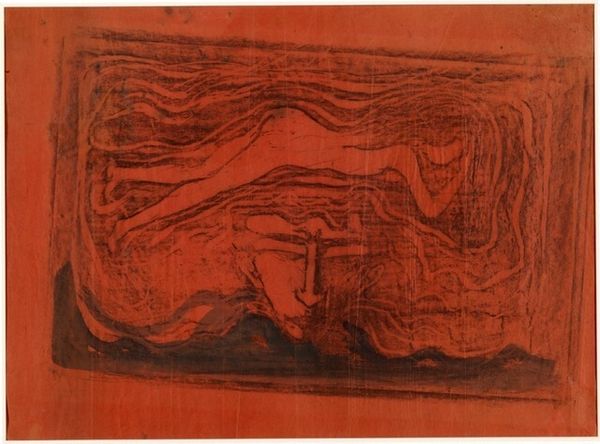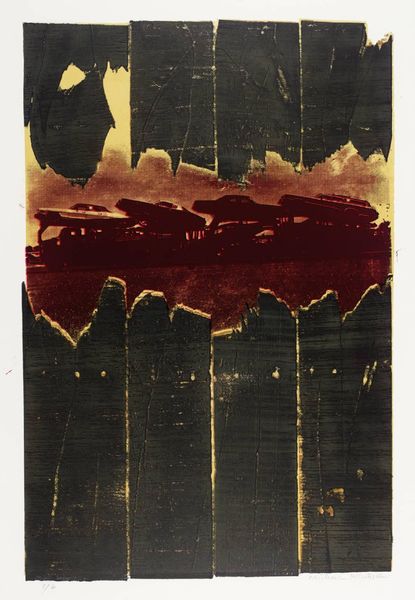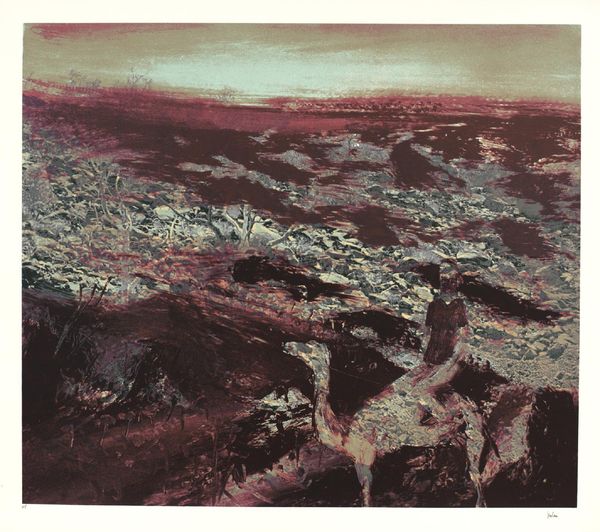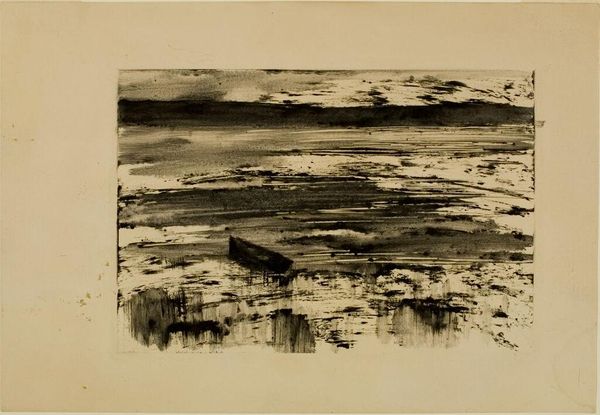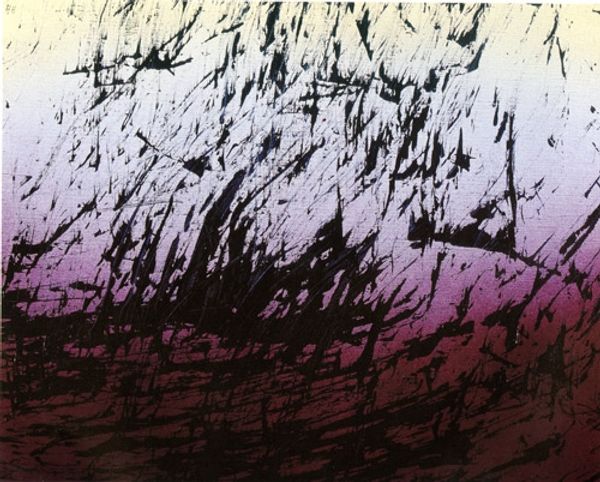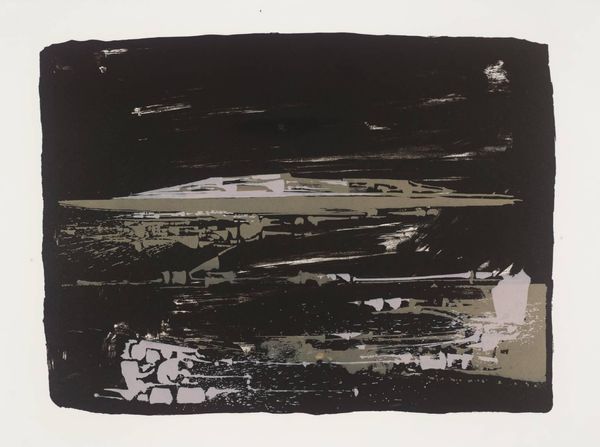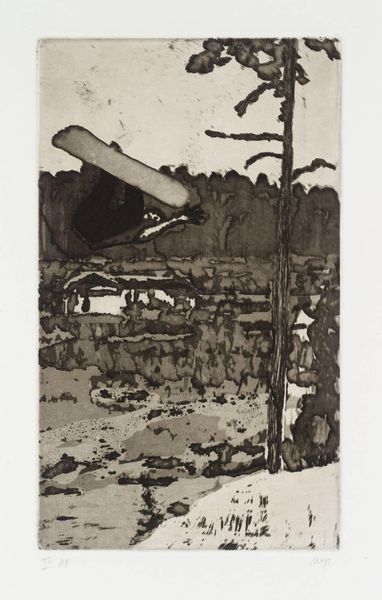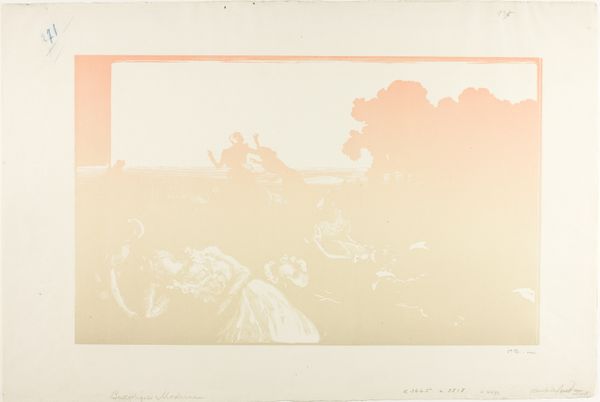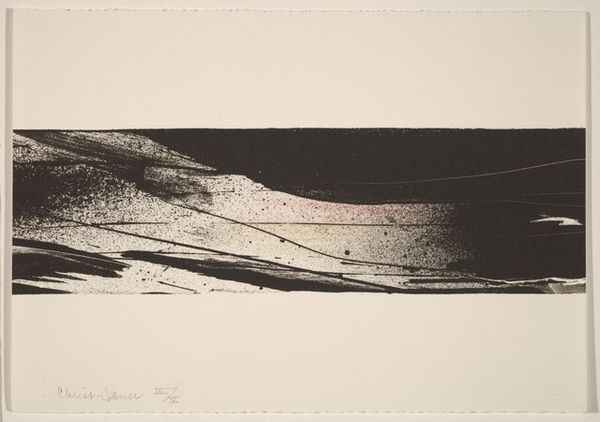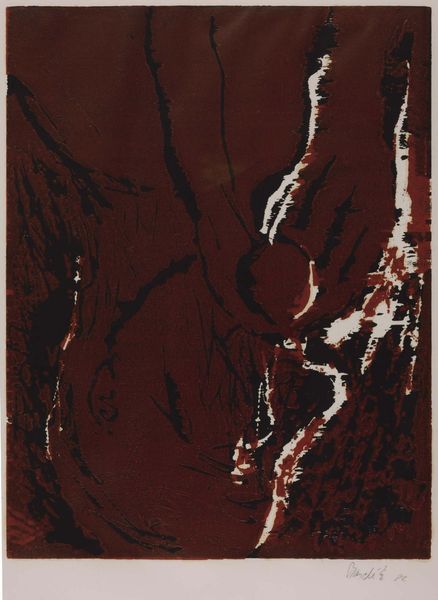
Dimensions: image: 277 x 401 mm
Copyright: © Peter Doig | CC-BY-NC-ND 4.0 DEED, Photo: Tate
Editor: This is "Canoe Lake" by Peter Doig, from the Tate Collections. The printmaking technique gives it a sort of moody, dreamlike quality. What do you see in the process that informs the work? Curator: The texture is central. Look closely at the layers of ink, the evidence of the artist's hand and labor. How does the printmaking process itself—the repetitive act of pressing the image—relate to notions of craft versus fine art, and the value we assign to each? Editor: That's a great point, I never thought of it in terms of labor. Curator: Consider how Doig elevates a seemingly simple scene by focusing on the material act of its creation. This transforms our understanding of its inherent value. Editor: I see the value now. Thanks! Curator: The pleasure was all mine.
Comments
Join the conversation
Join millions of artists and users on Artera today and experience the ultimate creative platform.
tate 7 months ago
⋮
Grasshopper is Doig’s third print portfolio, following Ten Etchings 1996 (Tate P11471-P11480) and Blizzard ’77 1997 (Tate P11554-P11561). It was produced in an edition of thirty-five. Tate’s copy is one of seven additional proof sets. Each print is individually signed and numbered ‘TC’ (Tate copy) by the artist. The portfolio is presented in a pale yellow, hinged solander box bearing the artist’s name in dark brown. The title and colophon pages were designed by Peter B. Willberg and printed in dark green. The contents were printed at Hope Sufferance Press, London on 350gsm Zerkall paper and published by Charles Booth-Clibborn under his imprint, The Paragon Press. Colour etching involves a layering process sympathetic to Doig’s painting process of building up colours and image in many stages. The prints in Grasshopper were created using between one and three plates and a range of etching techniques. Variety in texture and tone was created with aquatint (a process for creating an even tonal field), open bite (a method in which unprotected areas of the plate are exposed to acid to produce a very light tone), deep bite (a process which results in very dark tones), spit bite (a method involving painting or splashing acid onto the plate resulting in painterly effects) and sugarlift (a process which allows the artist to paint marks that print rather than having to outline them negatively). The individual prints were originally untitled, but were titled by the artist on publication of Contemporary British Art in Print: The Publications of Charles Booth-Clibborn and his Imprint The Paragon Press 1995-2000 in 2001.
